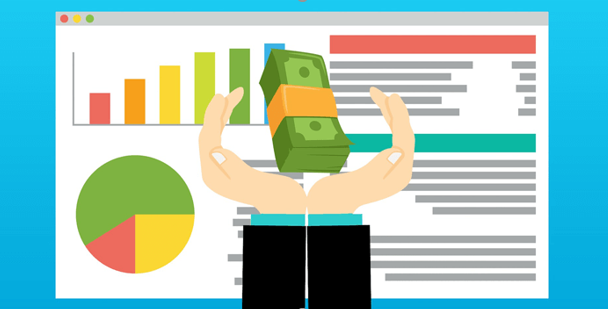By Rodney Laws
Budgeting is a key concern for every business, regardless of its size or nature. “What of giant companies with remarkable cash reserves?”, you might ask. Well, they only have such resources because they budget so efficiently. Everyone faces the same balancing act: on one hand, trying to invest in the future, and on the other hand, trying to keep expenses down.
This certainly applies to SEO, because it’s something that can be pursued indefinitely. There’s no such thing as a perfect page. Even if there were, a simple regular update to the ranking algorithm would once again leave it short of perfection. You need to know when to stop your efforts and move on — and for that, you need to know what you stand to gain by doing more.
Any page on your website that you want indexed could deserve SEO investment, depending on what you’ve already done. Due to this, you must carry out some analysis to determine where to focus your attention. In this post, we’re going to identify some tips that can help you figure out which pages on your website are most worthy of search optimization. Let’s begin.
Look for straightforward technical issues
When something isn’t working the way you want it to and there are numerous potential causes, you should check the simplest ones first. This isn’t just because they’re far more common. It’s also because they’re relatively easy to resolve. In the SEO world, there are basic technical issues that can completely ruin rankings, so look out for those.
The most obvious example involves discovering that a page you meant to index has been rejecting crawlers. No crawlers means no rankings. Another example is slow loading. Maybe the page that’s doing the worst in the rankings is loading several times more slowly than others on your site, causing it to be penalised. Google prefers speedy websites for obvious reasons.
PageSpeed Insights is great for finding slow pages.
Line up these basic issues and make a priority of fixing them as soon as possible. If there’s one page riddled with them, that should be your focus until they’re all resolved. You’ll never get more impactful results in SEO (and more ROI) than when you fix simple technical issues: making progress after that gets a lot trickier.
You may be able to improve performance sufficiently through tweaking, but it’s possible that you’ll need an infrastructure upgrade. If you created your site through a free or low-cost website builder and invested minimally in hosting, for instance, it’s time to scale things up. This doesn’t mean you need to give up the freedom of open source ecommerce, though. There are managed hosting providers (such as Cloud ways) that give users the freedom to choose which systems they use and make whatever modifications suit their goals.
Shoring up your technical foundation and achieving strong reliability doesn’t mean you can stop, though. SEO fully justifies consistent budgeting, and should remain a priority for years to come. It’s just a matter of ordering. Get the easy wins first, and face the tougher challenges later.
Consider what a page may one day become
Next, you should think not only about what a page is for now but also what it might be in the future. High-value pages should adapt to visitor preferences and SEO standards, but you may also want to expand them to do more with the visits they receive.
Take something like a roundup page listing the best pizza places in Winnipeg. If it got enough traffic, you could make the content more detailed to include more places. This would allow you to add more affiliate links and make some more money. It would also make the page feel more credible and authoritative.
You could even start linking out to other pieces of content like the best curry places in Winnipeg or the best pizza ovens for making pizza at home. Searches like that are extremely actionable, and valuable as a result. It could eventually become one of your most important pages, driving a lot of affiliate revenue and earning you myriad links.
This kind of affiliate page can be very lucrative.
If you can look at a page on your site and see that kind of potential, start investing in SEO for it immediately. That way, it will be ranking relatively well when you start broadening the content. Conversely, if you see a page that’s never going to be more complex than it already is, then is there much value in trying to get it ranking better?
Carefully review your page analytics
The problem that a lot of people have with reviewing analytics is that they expect arduous work. They imagine poring through spreadsheets and tables for hours on end. What’s more, they suspect that it might never meaningfully pay off. Why go through such strain if that’s the case?
Thankfully, that isn’t an accurate conception of what this process involves. This is due to the proliferation of convenient analytics tools: even Google Analytics is reasonably intuitive when you get to grips with it. Using such a tool, you can easily follow all the stats that matter. The result? Enhanced data aggregation and a drastic reduction in time spent on manual review. That’s a huge victory.
When you follow your on-page analytics, pay close attention to any metrics that represent general success for you. Look at things like average time on site and number of unique visits. This will help you understand which pages are performing well and which aren’t. As a result, you’ll find it easier to allocate resources effectively.
Keep in mind that you’ll need to factor in the broader context when you’re dealing with pages that aren’t destination pages (or at least aren’t solely destination pages). Category pages and homepages are good examples. A homepage should be a good landing page, set up to rank well for relevant keywords, but it must do something with that ranking success: pass it on to more actionable pages (namely product pages).
For each page, root through all the links leading to or away from it, and think carefully about what role it plays in your website overall, as well as what role it could play if improved. Remember that there must always be a purpose beyond promotion (boasting about your brand might feel good, but it won’t earn traffic, nor will it convince people to invest in you).
Use competitors’ websites for comparison
Let’s say that one of your pages — not one of your most important, but not insignificant — is fairly mediocre when it comes to SEO. Does that mean you should invest in it? Well, before you decide, do some searches for relevant terms and find rival pages to analyse. How do they compare to yours? Are they better? Worse? Similar?
Beyond that, take a close look at what those pages offer because that’s extremely important here. Imagine that your website sells hats, and you have a page that sells top hats specifically. If it isn’t ranking very highly but none of the pages outranking it sell anything, that lowers the need to invest in the page.
You should still work on getting the ranking up at some point, but it isn’t particularly urgent. Anyone who wants to order a top hat will probably make their way down to your site at some point if it’s the highest-ranking sales page. Consequently, you won’t lose any customers to other stores. Only some thought leadership and brand credibility through not being top.
If your page were ranking more highly in general but under another store page, that would be a bigger reason to invest in SEO. A searcher who just wanted to go ahead and buy might just order through the first viable store result. It’s all about understanding context. What do you stand to gain or lose by putting time into SEO?
Conclusion
SEO is a vital part of running a business with an online presence (which should be almost every business these days). Unfortunately, it’s complicated and costly to carry out thoroughly. To work more efficiently, you need to pick out the pages that most warrant that level of investment.
Try these tips to give you a strong indication of where to spend. You should be able to come up with a shortlist of pages that you can optimise without breaking the bank. The result? Stronger rankings, lower spend, and less work. Good luck.
Feature Image credit: Pixabay
By Rodney Laws
Editor at Ecommerce Platforms




